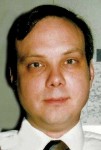by Dr. Patrick Mattson
Professor Emeritus
& Dr. Jeffrey Johnson
Professor
St. Cloud State University-Aviation
The University Aviation Association (UAA) membership and program accreditation teams from the Aviation Accreditation Board International (AABI) have worked hard to raise the profile of the collegiate aviation domain. Has collegiate aviation made any significant strides in combating a negative public perception and misunderstanding during the last 40 years? Is there a new trend to close high-profile collegiate aviation programs, such as St. Cloud State University, University of Illinois-Champaign, and Daniel Webster College? Unfortunately, there is lingering negative public perception, which is still problematic, even though there have been many new or expanded collegiate aviation programs nationwide since the fall of 2000.
During the last several years, aviation higher education programs in Minnesota alone have been closed at an alarming rate. The aircraft maintenance program at Minneapolis Community & Technical College, and the associate’s degree programs at Inver Hills Community College and Anoka Ramsey Community College have closed, in addition to St. Cloud State University’s baccalaureate degree program. In the spring of 2010, the aviation program at Mankato was closed, however, it has won a temporary reprieve.
It is possible that Minnesota will no longer have any baccalaureate degree aviation programs left to serve the upper Midwest population and foster economic growth in light of projected personnel.
At best, this problem would force Minnesota to hire newly minted aviation graduates from out of state. At worse, it could disrupt the Minnesota air transportation industries, and the public’s ability to safely use air transportation with any degree of reliability.
What are some of the underlying problems leading to the demise of some aviation programs?
At first glance, the answer may seem exclusively monetary in nature. However, collegiate aviation seemingly endures a perpetual perception problem viewed by traditional academicians and the public at large.
For example, many traditional academicians believe that collegiate aviation programs only train students for a skill (e.g., fly or fix airplanes), and therefore, aviation only belongs in a trade school. Perhaps this questionable argument could also be made for the Bachelor of Science in Nursing (BSN), or Computer Science, as well. The reality is that many employers, including those in the medical and aviation fields, require a bachelor’s degree for entry-level positions that provide some evidence that the new graduate has an integrated skill set. Aviation is not just stick and rudder or non-radar control anymore. A balanced skill set, including decision-making and critical thinking capabilities, is needed.
On May 25, 1961, President John F. Kennedy declared that we should send an American to the moon, and a younger generation got excited about aviation and aerospace. That spark is needed again which we think is being manifested in the current Science, Technology, Engineering & Mathematics (STEM) education debate. We have had discussions over the years with K-12 teachers who would like to incorporate STEM lessons into their classes. They are often surprised to hear that free or low-cost materials are available to get students excited about math and science. (See Fly to Learn www.flytolearn.com and NASA http://quest.nasa.gov/index.html.)
One of the newest organizations taking a role in training reform is the Society of Aviation and Flight Educators (SAFE). Their recently released progress report speaks to the success of training reform dependent on collaboration and grassroots implementation (http://www.pilottrainingreform.org/news/). What happens to all of this effort if we get kids excited about an aviation career, but there are few options at the next level?
Quite possibly the greatest challenge with collegiate aviation perception lies with the “public.” Communicating the simple understanding that collegiate aviation actually even exists in the eyes of the public, and its importance to their safety, seems to be an ongoing challenge.











